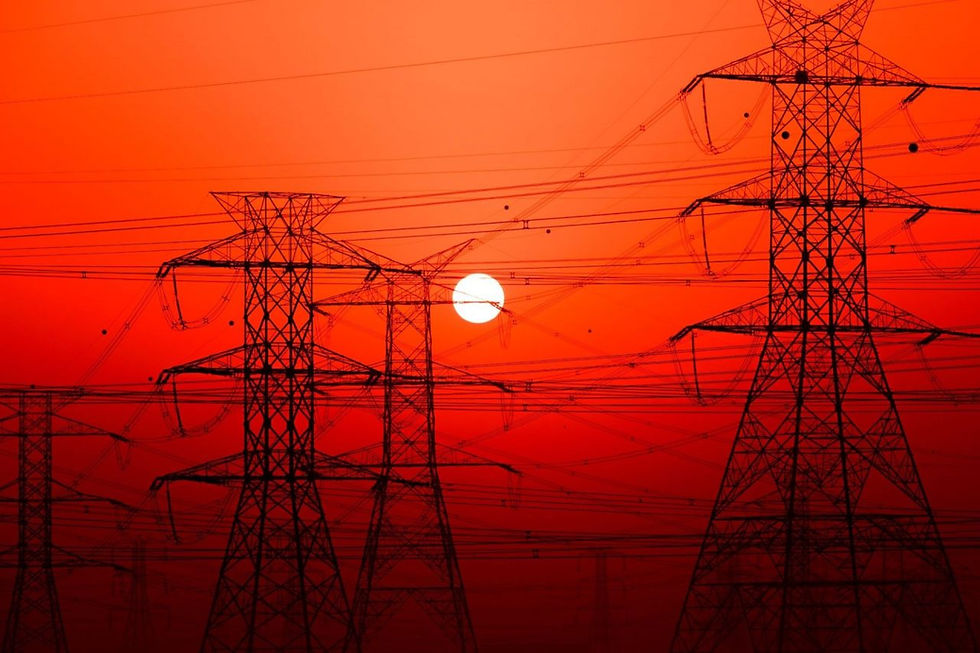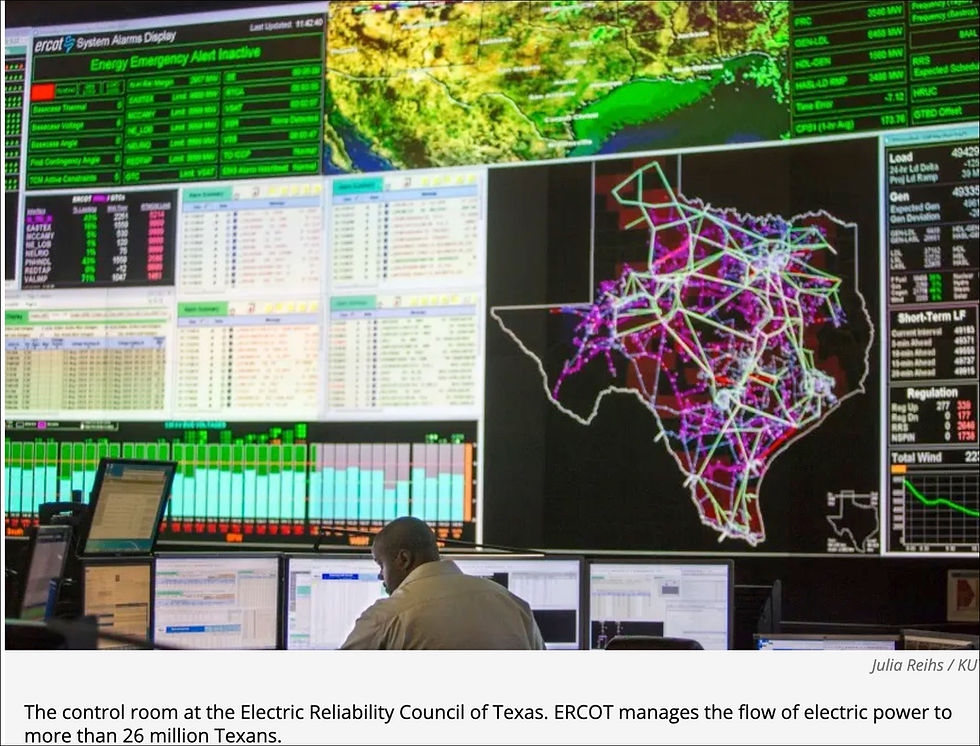Texas faces 16% chance of grid emergency during evenings in August, ERCOT says. But some worry ERCOT is "undershooting."
- Manager
- Jun 20, 2024
- 3 min read

Summary: ERCOT assessment forecasts an 18% risk of emergency conditions and 14.6% risk of rolling blackouts and controlled outages."But other experts believe ERCOT tends to 'undershoot on their demand forecasts for the peaks'.
Latest Update: posted 12 June 2024
Select #Tags for additional articles: #Electricity
Texas faces 16% chance of grid emergency during evenings in August, ERCOT says. But some worry ERCOT is "undershooting."
"Texans’ risk of dealing with emergency grid conditions after sundown will top 16% in August, according to a new report from the Electric Reliability Council of Texas. And the risk of rolling blackouts during the hour beginning at 8 p.m. is 12%, the state grid operator said Friday.
"The elevated risks come after sundown when the grid loses its cushion of supply from solar power...

ERCOT’s report comes after a federally appointed grid watchdog’s modeling last month showed Texas facing a slightly higher risk this summer. The North American Electric Reliability Corp. summer assessment forecasts an 18% risk of emergency conditions and 14.6% risk of rolling blackouts and controlled outages." [2]
"Ed Hirs, an energy fellow at the University of Houston, said he’s skeptical of the accuracy of ERCOT’s projection. He said the projection relies on the state’s energy sources operating as expected, which may not be the case as temperatures continue to rise. According to Hirs, the increasing heat could cause issues at some power plants “because their coolant systems become overwhelmed.”
“'Keep in mind, ERCOT doesn’t operate these plants. ERCOT can call them into service, but does not invest, does not maintain the power plants,' Hirs said. 'To a certain extent, it’s a bit like herding cats.'”
"Hirs believes ERCOT tends to 'undershoot on their demand forecasts for the peaks.'” [3]
Sources and Resources
[1] Monthly Outlook for Resource Adequacy (MORA) > Monthly Outlook for Resource Adequacy (MORA), Reporting Month: August 2024, ERCOT
MORA releases are targeted for the first Friday of each month. A MORA is released two months prior to the reporting month; for example, the planned release of the MORA report for August would be the first Friday in June.
[2] Texas faces 16% chance of grid emergency during evenings in August, ERCOT says, San Antonio Express News, 07 June 2024
The period from 8 p.m. to 10 p.m. will be the riskiest for the Texas grid.
Texans’ risk of dealing with emergency grid conditions after sundown will top 16% in August, according to a new report from the Electric Reliability Council of Texas. And the risk of rolling blackouts during the hour beginning at 8 p.m. is 12%, the state grid operator said Friday.
The elevated risks come after sundown when the grid loses its cushion of supply from solar power and complicated by a chokepoint in transmission lines near San Antonio and concerns about reserve supply.
ERCOT’s report comes after a federally appointed grid watchdog’s modeling last month showed Texas facing a slightly higher risk this summer. The North American Electric Reliability Corp. summer assessment forecasts an 18% risk of emergency conditions and 14.6% risk of rolling blackouts and controlled outages.
[3] ERCOT says Texas could face rolling blackouts in August, as Houston officials announce cooling centers, Houston Public Media, a service of the University of Houston, 07 June 2024
ERCOT, the entity responsible for managing the flow of electric power to more than 26 million Texas customers, released a monthly outlook for resource adequacy for August on Friday. The report found that energy demand throughout the state of Texas could reach as high as 78,000 megawatts in August. That’s just below the state’s projected supply of nearly 83,000 megawatts for August.
However, the report details a 16% chance that operating energy reserves could drop below 2,500 megawatts, and a 12% that reserves could dip below 1,500 megawatts — which could potentially trigger rolling blackouts to prevent a statewide grid failure.
Ed Hirs, an energy fellow at the University of Houston, said he’s skeptical of the accuracy of ERCOT’s projection. He said the projection relies on the state’s energy sources operating as expected, which may not be the case as temperatures continue to rise. According to Hirs, the increasing heat could cause issues at some power plants “because their coolant systems become overwhelmed.”
“Keep in mind, ERCOT doesn’t operate these plants. ERCOT can call them into service, but does not invest, does not maintain the power plants,” Hirs said. “To a certain extent, it’s a bit like herding cats.”
Hirs believes ERCOT tends to “undershoot on their demand forecasts for the peaks.”
Comments